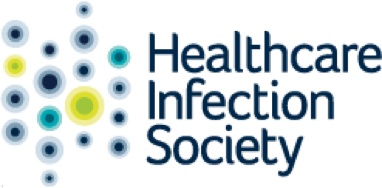- Meticillin-resistant Staphylococcus aureus (MRSA) infections remain a serious cause of healthcare-associated infection globally. While the incidence is decreasing, this remains an important concern for IPC professionals.
- Together, the Healthcare Infection Society and the Infection Prevention Society have updated the guidelines for the prevention and control of MRSA in healthcare settings. This page provides additional resources for IPC professionals in support of the guidelines, and will be updated with new content as it becomes available.
- This guideline has been produced by key experts on the front-line of patient care and is freely accessible.

Frequently asked questions
What the evidence says: Universal screening strategy has no benefit over targeted screening. However, we think that in some settings, universal screening may be more practical.
What we recommend: Screening in some form needs to be performed: use at least a targeted approach, but you can also consider using universal screening as appropriate, and depending on local facilities.
What the evidence says: So far, there are no few studies which investigated whether repeat screening is beneficial.
What we recommend: There is no need to perform repeat MRSA screening routinely. You do not need to perform repeat MRSA screening for patients who screen positive at admission unless the patient undergoes decolonisation therapy.
In cases where the patient does undergo decolonisation therapy, consider repeat MRSA screening two to three days following the therapy, to determine whether decolonisation was successful or not.
What the evidence says: The diagnostic accuracy of PCR is similar to culture and there is a benefit in obtaining results in a shorter time. However, these benefits do not translate into a clinical benefit of reducing the incidence of MRSA acquisition or infection and PCR screening may incur higher cost.
What we recommend: You can use either PCR or traditional culture methods for MRSA screening as you consider appropriate depending on your local laboratory facilities.
What the evidence says: So far there are no studies which investigated whether staff screening is beneficial.
What we recommend: There is no need to routinely screen staff for MRSA, but you may consider screening staff for MRSA if there is an epidemiological reason for doing so.
What the evidence says: There are no studies in this area.
What we recommend: You may consider excluding staff from work, reducing their interaction with patients, or offering decolonisation therapy as deemed appropriate.
What the evidence says: The most common topical decolonisation therapy offered to patients and staff is chlorhexidine (CHG) and mupirocin, either as a combination or alone. The evidence suggests that these agents remain the most effective. There are some alternatives to these, but so far very few have been shown to be beneficial. Octenidine used for skin decolonisation is also clinically effective. It is now also recognised that decolonisation therapy does not usually eradicate MRSA but only suppresses it temporarily. Evidence also shows that the use of mupirocin and CHG and lately octenidine leads to increased resistance to these products.
What we recommend: Use mupirocin for nasal decolonisation, either selectively for those who are colonised, or universally for all high-risk patients. You can use chlorhexidine, either selectively or universally, for body decolonisation to reduce MRSA carriage. Consider alternatives where mupirocin and chlorhexidine are not feasible (such as octenidine).
Monitor the emergence of resistance, especially to mupirocin and chlorhexidine, if used extensively.
What the evidence says: So far, there are no studies which investigated whether environmental screening/sampling may be clinically or cost effective.
What we recommend: You do not need to screen/sample the environment routinely, but you may consider using environmental screening/sampling as part of targeted investigation of an outbreak.
What the evidence says: There is no evidence that one disinfecting agent is better than others. There is weak evidence that using HPV or ultraviolet devices have limited benefit for MRSA alone but that they may be useful as a part of a wider IPC strategy.
What we recommend: You can continue to use standard products approved for use in healthcare, and can consider using hydrogen peroxide vapour (HPV) or ultraviolet (UV-C, PX-UV) devices as an adjunct to terminal cleaning as a part of a wider IPC strategy.
What the evidence says: There is evidence that rates of MRSA bloodstream infection (BSI) have decreased when mandatory national surveillance is introduced in combination with other prevention strategies.
What we recommend: Hospital surveillance is an important a component of MRSA prevention and control programmes: undertake routine surveillance as part of your hospital’s IPC strategy and to ensure you comply with mandatory national requirements.
What the evidence says: There is an inconsistent evidence on this topic with only some studies suggesting that contact precautions are effective in preventing MRSA transmission than standard precautions. There is also evidence that contact precautions, especially isolation, may have a negative effect on patient well-being. However, they are widely used in health and care settings and the facilities may decide to continue this practice.
What we recommend: Use standard IPC precautions in the care of all patients to minimise the risk of MRSA transmission. For patients known to be colonised/infected with MRSA, you can consider using contact precautions for direct contact with the patient or their immediate environment.
Consider placing patients colonised or infected with MRSA in a single room. Base the decision to use a single room on a risk assessment that considers the risk of transmission associated with the patient’s condition and the extent of colonisation and/or the risk of transmission to other patients in the specific care setting.
Where isolation is deemed necessary, isolate patients for the shortest possible time to minimise feelings of stigma, loneliness, and low mood. Provide clear information to patients about the need for the use of protective equipment to reduce their feelings of stigma. Make sure you are consistent in the use of protective equipment to ensure that patients have confidence in the decision to place them in isolation.
You can use these patient leaflets to help patients understand more about MRSA and what to do if they are colonised with MRSA.
What the evidence says: Evidence suggests that movement of patients within a single healthcare setting or movement between related healthcare settings has the potential to increase the transmission of MRSA.
What we recommend: Design systems of care to minimise the transfer of patients between wards, units, hospitals, or other clinical settings unless it is clinically necessary. Where it is necessary, make sure you inform the receiving setting and the transport service that the patient is colonised or infected with MRSA.
What the evidence says: Evidence suggests that when equipment is shared and not cleaned in between patient use, transmission of organisms such as MRSA can occur.
What we recommend: You need to clean and disinfect shared pieces of equipment used in the delivery of patient care after each use, utilising products as specified in your local protocol.
What the evidence says: Evidence suggests that patients do not know enough about MRSA and that they worry about being infected by MRSA when they go to hospital. Evidence also demonstrates that patients have little understanding why they need to be screened, isolated, or placed under contact precautions. Additionally, there is a risk that patients who are isolated may receive fewer bedside visits and may suffer from adverse clinical and mental health outcomes.
What we recommend: You need to make patients aware of the reasons for MRSA screening and decolonisation and inform patients of their screening result as soon as it is available.
For patients who are identified as MRSA positive, provide consistent and appropriate information about:
- The difference between colonisation and infection
- The microorganism
- How MRSA is acquired and transmitted
- How MRSA is treated
- The reasons for contact precautions or isolation.
On discharge, provide consistent and appropriate information about:
- The risks to household members, friends, and family.
- The implications for future health and health care.
- Persons who need to be notified about their MRSA colonisation status.
- If applicable, instructions on decolonisation regimen with the information that the results may not be permanent.
When considering the provision of patient information, ensure it is provided in a format and language that the patient and their family can understand.
What the evidence says: There are no studies which explore this topic.
What we recommend: You therefore need to follow your national guidance for managing infection risks when handling the deceased.



